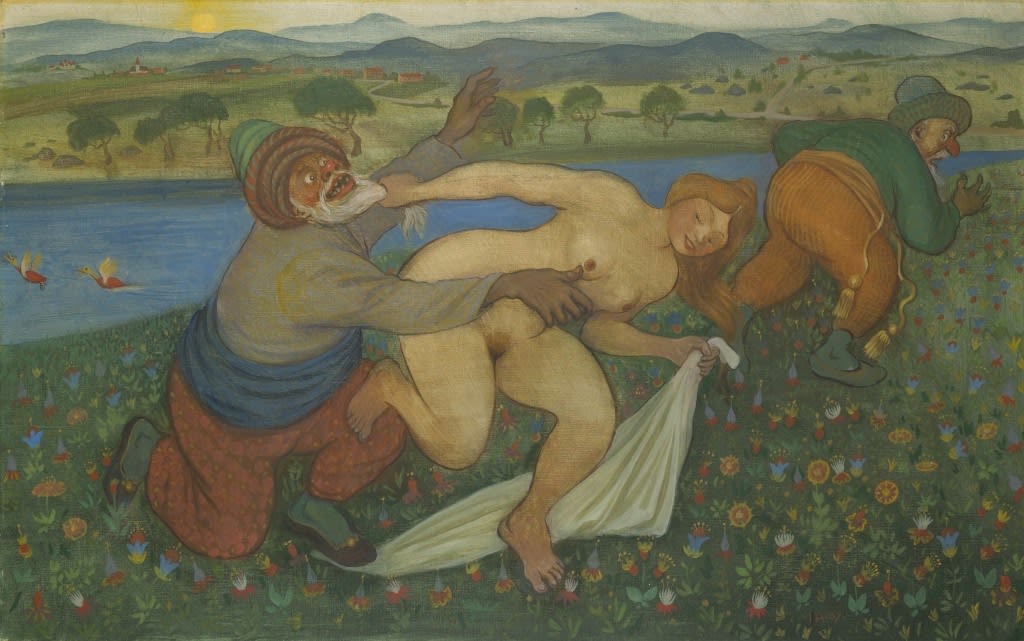Ivar Arosenius Swedish, 1878-1909
25 1/4 x 39 3/8 in
Further images
This morality tale provoked great interest amongst artists throughout the ages. The subject was painted by, among others, Jacobo Tintoretto, Artemisia Gentileschi and Peter Paul Rubens, whose version from 1614 could have been studied by Arosenius at the Nationalmuseum in Stockholm.
Arosenius’s version of this fundamentally serious subject is wryly playful. Jokes and laughter are his way of expressing antipathy towards the formal manner. Even though his Susanna evades the Elders’ advances, she seems mildly amused rather than frightened. Her naked, almost burly, full-figured body is contained within continuous contour lines.
The men are dressed in Orientalist costumes that Arosenius could have borrowed from any number of fairytale illustrations. The meadow in the foreground is covered with stylised flowers, and recalls the pattern of a Tabriz carpet.
The painting is an example of how Arosenius would use classic motifs in order to freely rearrange environments, interpretative frameworks and conventions in his own tales. Arosenius returned to the subject of Susanna and the Elders in different versions in his drawings and watercolours. In the small watercolour (cat no 19) with the same title as the present work, Susanna seems able to deal with her tormentors by herself.
Provenance
Eva Arosenius-Dich;
By descent to Eva Arosenius (Lillan);
Acquired from the above by Johan Ramberg (co-founder of Vinge lawfirm), Gothenburg;
Acquired from the above by a private collector;
Thence by descent
Exhibitions
Lund University Art Museum, “Ivar Arosenius, Sigge
Bergström, Gerhard Henning”, 1908, cat no 121;
Kungl. Akademien för de fria konsterna (The Royal Academy of Arts), Stockholm,
“Minnesutställningen öfver konstnären Ivar Arosenius”, 10
April - 16 May 1909, cat no 21;
The Baltic Exhibition, Malmö, 1914, cat no 1852;
Gothenburg Museum of Art, “Ivar Arosenius”, 1958-59, cat no 324;
Borås Museum of Art, “Ivar Arosenius”, 1988-89
Literature
Asplund, 1928, p 167 and plate no 17;Ernst Spolén et all, 1956, “Minnesbilder”, illustration in colour p 111;
Sandström, 1959, p 181-182 (illustration), 210 & 274, no 125;
Fredlund, 2009, p 203, cat no 48








